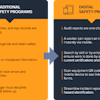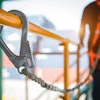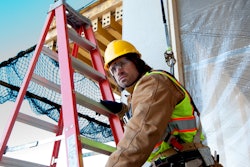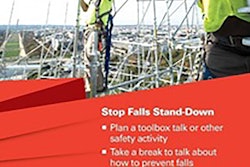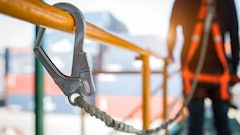The Best Fall Arrest Harnesses have these five components:
- Strap Keepers - A Fall Arrest Harness should be worn snug to safely protect you from the impact of a fall. To maintain the snug adjustments, usually made on the ground, the harness should have two strap keepers for each adjustable component. One to keep the loose straps from getting in your way and one to lock in the adjustment from coming loose during movement while working. These inexpensive tabs help ensure your equipment maintains the proper settings to ensure the best performance in a fall.
- Adjustable Chest Strap - Many Fall Arrest Harnesses are designed to accommodate the many shapes and sizes of the workers who wear them. An adjustable strap ensures you can place the chest strap along the sternum, if the strap is too high it could impact the throat of the user after a fall, too low and the user could fall out if the shoulder straps separate from the impact of a fall. This adjustment is also critical in a post fall condition to ensure the chest strap can be pulled down and away from the throat.
- Butt Strap - The Butt Strap or Sub-Pelvic Strap should connect both leg straps and essentially cradle your butt, or Sub-Pelvic region. This feature is essential to appropriately transferring the momentum of a fall into the strongest part of your body, your butt and legs.
- Back Strap - This simple strap that connects the vertical shoulder straps together horizontally prevents the user from falling out the back of the harness in the event of a fall or while in a post fall condition, meaning hanging from the harness.
- Stitching, Labels, and Fall Indicators - Quality and comprehensive stitching. Compare two harnesses and I guarantee you'll be able to tell the difference between a poor stitching job and a quality one. Also consider where heavy-duty stitching is located, connections that will experience the most stress should showcase heavy-duty stitching. Quality harnesses will be designed with the labels protected from the jobsite, the weather, and regular wear and tear. Fall indicators protect you and your employees from a compromised harness that may have experienced a dynamic load during its previous use. These indicators reveal themselves as ripped stitching after folded webbing becomes undone after a fall.
